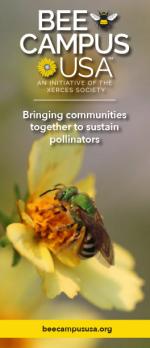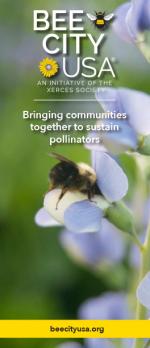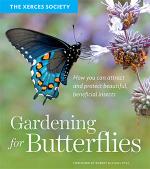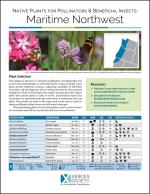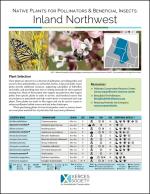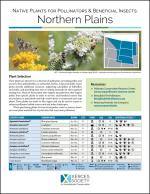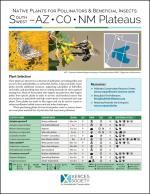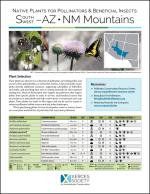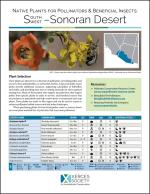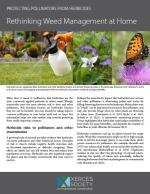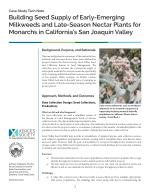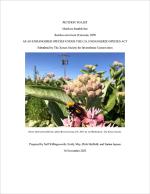As a science-based organization, the Xerces Society produces dozens of publications annually, all of which employ the best available research to guide effective conservation efforts. Our publications range from guidelines for land managers, to brochures offering overviews of key concepts related to invertebrate conservation, from books about supporting pollinators in farmland, to region-specific plant lists. We hope that whatever you are seeking—whether it's guidance on making a home or community garden pollinator-friendly, advice on developing a local pesticide reduction strategy, or detailed information on restoring habitat—you will find it here!
Find Publications
Use the search functions to sort by publication type (books, guidelines, fact sheets, etc.), location, and/or subject (agriculture, gardens, pollinators, pesticides, etc.).
Bringing Communities Together to Sustain Pollinators
Bee Campus USA brings college communities together to sustain pollinators by increasing the abundance of native plants, providing nest sites, and reducing the use of pesticides. Affiliates of Bee Campus USA also work to inspire others to take steps to conserve pollinators through education and outreach. Learn how your college can join Bee Campus USA.
Bringing Communities Together to Sustain Pollinators
Bee City USA brings communities together to sustain pollinators by increasing the abundance of native plants, providing nest sites, and reducing the use of pesticides. Affiliates of Bee City USA also work to inspire others to take steps to conserve pollinators through education and outreach. Learn how your community can join Bee City USA.
How you can attract and protect beautiful, beneficial insects
Protect and nurture the best-loved of garden guests: butterflies, nature’s kaleidoscopes with wings. The Xerces Society introduces you to a variety of butterflies who need our help, and provides suggestions for native plants to attract them, habitat designs to help them thrive, and garden practices to accommodate all their stages of life.
Identify native plants that attract native pollinators and beneficial insects in the Maritime Northwest region.
This regional plant list highlights native plants that are highly attractive as food sources for adult pollinators; support caterpillars of butterflies and moths; serve as nesting material or sites for certain bees; provide pollen for bees with specialized pollen needs; and feed beneficial predators and parasitoids that contribute to pest control. For those looking for just a few key plants, our staff have flagged their favorites.
Identify native plants that attract native pollinators and beneficial insects in the Northern Plains region.
This regional plant list highlights native plants that are highly attractive as food sources for adult pollinators; support caterpillars of butterflies and moths; serve as nesting material or sites for certain bees; provide pollen for bees with specialized pollen needs; and feed beneficial predators and parasitoids that contribute to pest control. For those looking for just a few key plants, our staff have flagged their favorites.
This regional plant list highlights native plants that are highly attractive as food sources for adult pollinators; support caterpillars of butterflies and moths; serve as nesting material or sites for certain bees; provide pollen for bees with specialized pollen needs; and feed beneficial predators and parasitoids that contribute to pest control. For those looking for just a few key plants, our staff have flagged their favorites.
This regional plant list highlights native plants that are highly attractive as food sources for adult pollinators; support caterpillars of butterflies and moths; serve as nesting material or sites for certain bees; provide pollen for bees with specialized pollen needs; and feed beneficial predators and parasitoids that contribute to pest control. For those looking for just a few key plants, our staff have flagged their favorites.
This regional plant list highlights native plants that are highly attractive as food sources for adult pollinators; support caterpillars of butterflies and moths; serve as nesting material or sites for certain bees; provide pollen for bees with specialized pollen needs; and feed beneficial predators and parasitoids that contribute to pest control. For those looking for just a few key plants, our staff have flagged their favorites.

